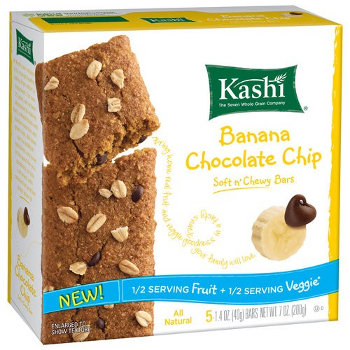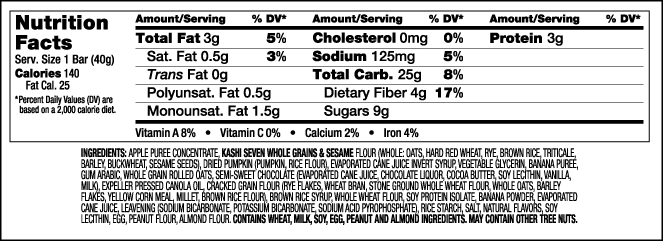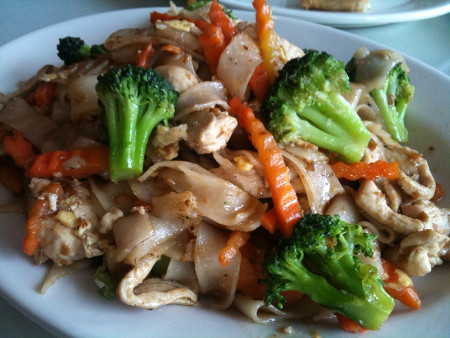Having been a fan of many Kashi products over the years, and always enjoying a wonderful slice of homemade banana bread, I purchased the new Banana Chocolate Chip Soft n’ Chewy bars. Though the product doesn’t seem to get many positive reviews on the Kashi site or on other sites like Amazon, I thought that people just weren’t used to type of product that the brand often releases–a health-concious alternative to a typical treat.

I tend to like to have such a snack a little bit before going to bed (I know, I know; there are probably better times to have a snack than right before bedtime, but that’s when I like something sweet). I was excited to try these seemingly tasty morsels for myself, so I poured a small glass of milk, and grabbed one of them out of the box. The first bite was interesting, as it didn’t really remind me of banana bread at all, but rather of something like the pumpkin spiced breads from Thanksgiving time. Looking at the ingredients list, that taste made more sense to me:

As you may notice, the first hint of something banana (banana purée) doesn’t show up until quite far down the list. In fact, “dried pumpkin” shows up before it! In any case, the bars are pretty good, all things considered, but I don’t know that I would describe them as Banana Chocolate Chip bars. Though they have those ingredients, it seems to me that Kashi is trying to say that they taste like banana bread. To me, they don’t really have a taste that I can readily compare to anything else; they have a unique flavour. The texture is somewhere in between a soft cookie and a cereal bar. Many reviewers said that they were dry, but I didn’t find them to be that bad. Actually, I think that they were significantly more moist than some of the other Kashi products that I’ve had in the past.
Though they aren’t the absolutely best tasting snack bars that I have ever had, I find them to be quite enjoyable, especially seeing as they only have 3g total fat (0.5 saturated) and 140 calories. I also like that they 4g of dietary fibre and have a half-serving of both fruits and vegetables. Overall, not a bad little snack, but I will disagree with Kashi’s suggestion that they are “kid friendly.” I don’t think that many kids would find them tasty.
Cheers,
Zach



